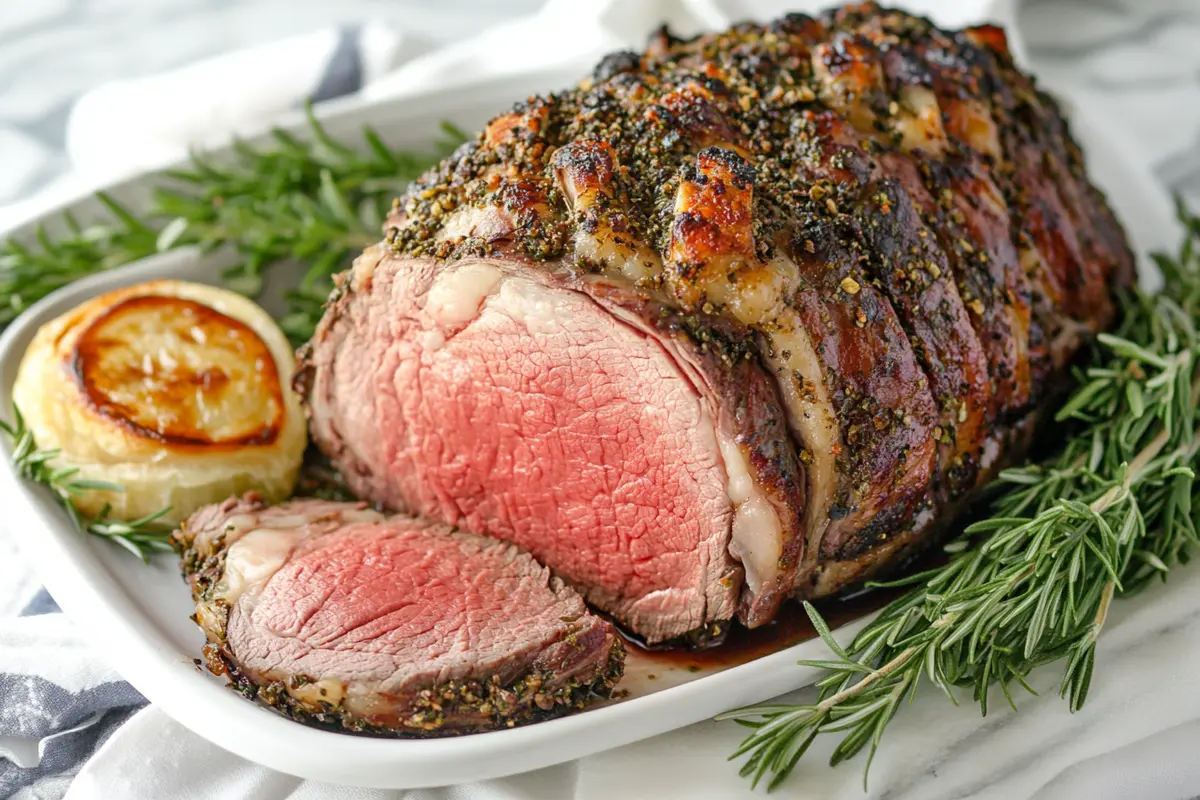Table of Contents
The ribeye roast recipe is a guaranteed showstopper, particularly during the holiday season. This impressive cut of beef promises a rich, flavorful experience, satisfying even the most discerning palates. It’s a dish that can elevate any gathering into a memorable feast. Therefore, let’s explore the steps necessary to achieve a truly exceptional roast. Using this ribeye roast recipe, you will turn your kitchen into a haven of culinary delight. This comprehensive guide ensures even novice cooks can feel like seasoned professionals, confidently mastering this delectable dish.
Understanding the Ribeye Roast
The ribeye roast recipe begins with understanding the cut. The ribeye roast, also known as a prime rib roast or standing rib roast, is a cut of beef derived from the rib section of the cow. It is renowned for its generous marbling, a web of fat interwoven within the muscle. This marbling is the key to the roast’s succulence and flavor. As the roast cooks, this fat melts, basting the meat from within, creating a tender and exceptionally flavorful result. Understanding the nuances of this cut is the first step toward culinary perfection. The quality of the roast will directly influence the outcome of your ribeye roast recipe.
The Importance of Marbling
Marbling, as mentioned, plays a vital role in the ribeye’s tenderness. It also contributes to the richness and depth of flavor. A well-marbled roast ensures a juicy and satisfying eating experience. Consequently, when selecting your ribeye roast for this ribeye roast recipe, take the time to examine its marbling. Look for a distribution of white fat throughout the red muscle. The more marbling, the more flavorful and tender your roast will be. Avoid roasts with little or no visible marbling, as these will likely be dry and less flavorful.
Choosing Your Ribeye Roast
Selecting the appropriate ribeye roast is crucial for the success of your ribeye roast recipe. A few key considerations will guide you. These include the size of the roast, its marbling, and whether it is bone-in or boneless. A roast with an even thickness will cook more uniformly, ensuring every part reaches the desired level of doneness. Your choice between a boneless and bone-in roast depends on your preferences as you follow this ribeye roast recipe.
Boneless vs. Bone-In: A Closer Look
For this ribeye roast recipe, boneless roasts offer the advantage of easier carving and handling. Conversely, bone-in roasts can impart a deeper flavor and may contribute to a more moist result. Choose between bone-in for added flavor, and boneless if you prefer an easier carving experience when making this ribeye roast recipe.
Size and Quality
Consider the number of people you’re serving when choosing the size of your roast for this ribeye roast recipe. Plan for about a pound per person, or a bit less if you have other hearty dishes. Always prioritize quality when buying your roast. Opt for a roast with good marbling. Look for one that appears fresh and has a rich, red color. If possible, purchase your roast from a reputable butcher shop where you can inquire about its source and freshness. A high-quality roast is the foundation for an excellent finished dish. This ribeye roast recipe deserves the best quality.
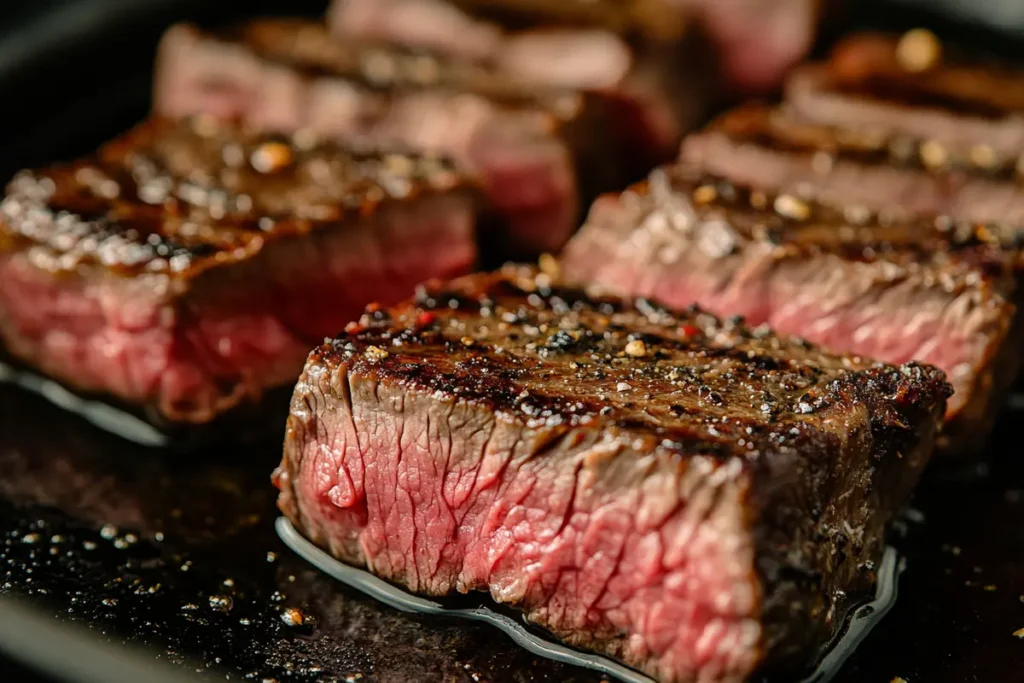
Preparing the Ribeye Roast
Proper preparation before cooking significantly impacts the roast’s final result when using this ribeye roast recipe. This process includes bringing the roast to room temperature, patting it dry, and seasoning it adequately. These steps are not merely suggestions, they are crucial components for achieving a succulent and flavorful roast. These are some important details for your ribeye roast recipe to be successful.
Bring to Room Temperature
Before cooking, it’s essential to bring your ribeye roast to room temperature. This process typically takes about one to two hours, depending on the size of the roast. Allowing the roast to sit at room temperature helps it cook more evenly. If the roast is too cold, it will take longer for the center to reach the desired temperature. This often results in an overcooked exterior. Be sure to keep it out of the sun, and do not let the meat sit out too long when following this ribeye roast recipe.
Drying and Seasoning
Pat the roast dry thoroughly using paper towels. This step is essential for achieving a good sear. Excess moisture on the surface can prevent the Maillard reaction, which creates the flavorful brown crust. Season the roast generously with salt and freshly ground black pepper. Don’t be shy with the seasonings. Salt not only enhances the flavor of the roast but also helps tenderize the meat. Consider adding garlic powder, dried herbs, or other spices to further amplify the flavor profile. These are very important to a good ribeye roast recipe.
Optional Seasoning Enhancements
Feel free to experiment with different herbs and spices. Rosemary, thyme, and oregano are classic choices. They complement the rich flavor of beef. Smoked paprika and onion powder can add a layer of complexity. For a more robust flavor, consider creating a paste with minced garlic and olive oil. Rub this paste all over the roast. Customize the seasonings based on your taste preferences. The key is to ensure that the seasoning is well-distributed over the entire surface of the roast, so each slice of the ribeye roast recipe will be perfectly seasoned.
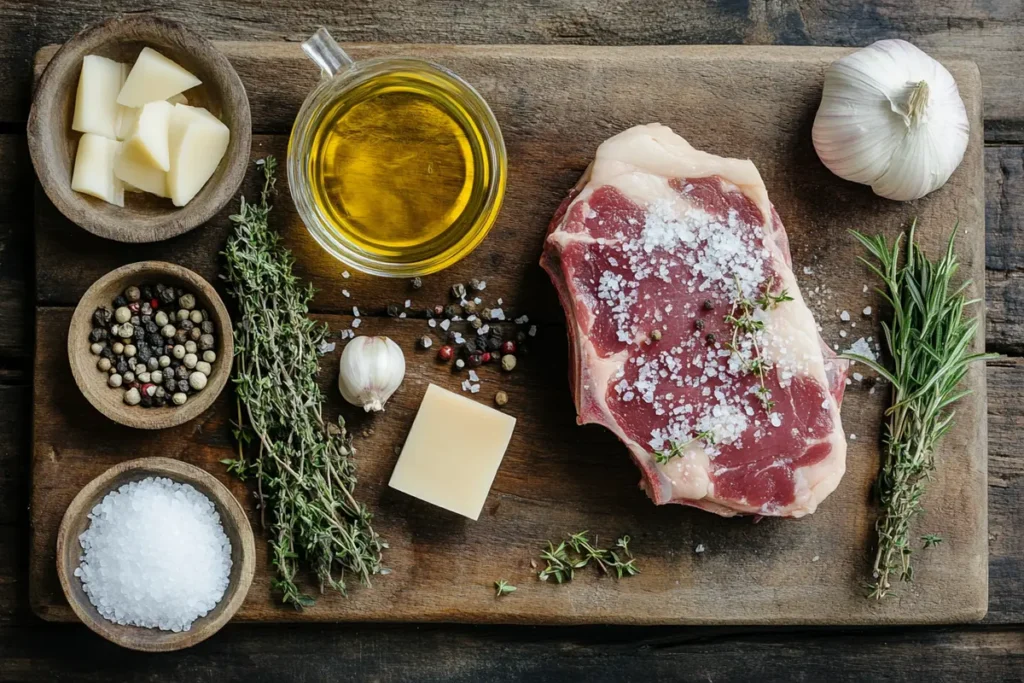
Searing the Ribeye Roast
Searing is a critical step in achieving a perfectly cooked ribeye roast. This process creates a flavorful crust that locks in the juices, enhancing both the taste and texture of the meat. It adds depth and complexity to the final dish. A proper sear requires a hot pan and a little patience. It’s worth the extra effort for a great ribeye roast recipe.
Achieving the Perfect Sear
Preheat a heavy-bottomed pan or cast iron skillet over medium-high heat. Add a high-heat oil, such as canola or grapeseed oil, or your choice of fat. The pan should be hot, but not smoking. Once hot, carefully place the roast into the pan. Sear all sides of the roast for approximately 2 to 3 minutes per side. The goal is to achieve a rich, brown, and deeply caramelized crust. Don’t move the roast too soon. Allow it to develop a good sear before turning. This process takes time, so be patient. This step of the ribeye roast recipe is where the flavor really starts to develop.
Important Searing Tips
Be careful not to overcrowd your pan. Overcrowding will lower the pan’s temperature, preventing a good sear. Work in batches if necessary. Ensure there’s enough space around the roast to allow proper heat circulation. Use tongs or spatulas to manage the roast and to prevent the meat from sticking. Keep an eye on the pan’s temperature to avoid any burning or smoking. This part of the cooking process really brings out the flavor, so don’t rush it, or you will compromise your ribeye roast recipe.
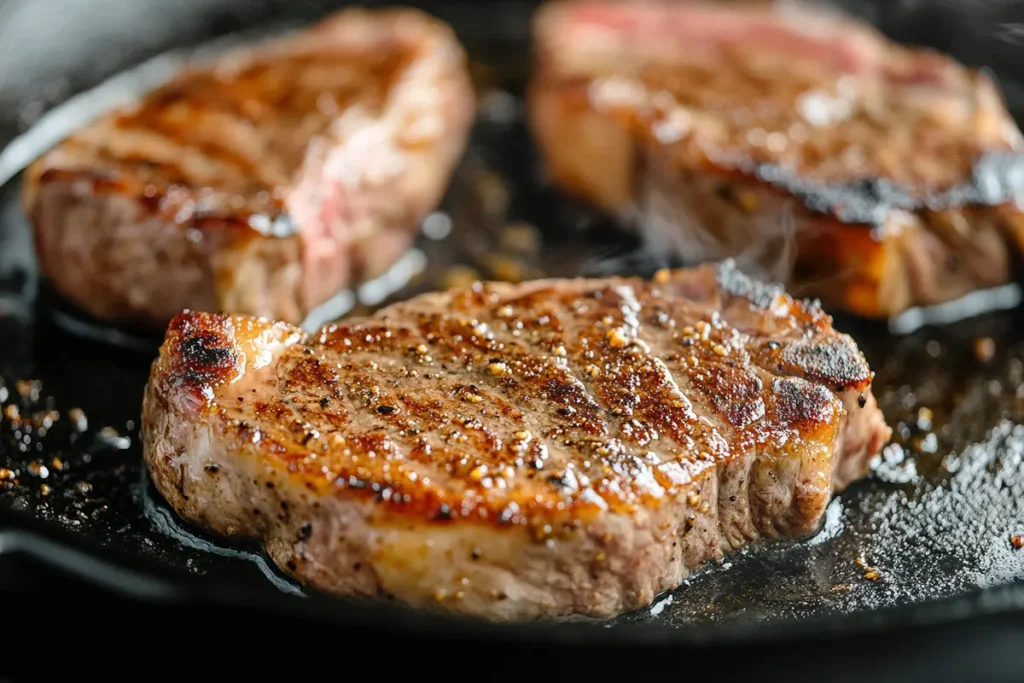
Roasting the Ribeye Roast
Once the roast is seared, it’s time to transfer it to the oven for the roasting process. This is where the roast will cook through to its desired doneness. It’s essential to preheat your oven and use a meat thermometer to ensure precise cooking. The roasting process requires some patience. The reward is a beautifully cooked, juicy ribeye. Follow these instructions to make this ribeye roast recipe a success.
Oven Temperature and Placement
Preheat your oven to 325°F (160°C). Place the seared roast on a rack inside a roasting pan. Ensure the rack is elevated slightly to allow air to circulate. This will promote even cooking. Insert a meat thermometer into the thickest part of the roast, being careful to avoid any bones, if you have a bone-in roast. This is the most accurate method to monitor the roast’s internal temperature, so keep this step in mind when following this ribeye roast recipe.
Roasting Time and Monitoring
Roast for 15 to 20 minutes per pound, or until the desired internal temperature is reached. The actual cooking time can vary based on the thickness of your roast and your oven’s calibration. It’s always better to err on the side of undercooked and monitor closely with the thermometer, adding more cooking time if necessary. Using a meat thermometer is essential to get the best results when cooking using this ribeye roast recipe. Check the temperature at least every thirty minutes, or more frequently if it nears your target temperature.
Temperature and Doneness Guide
The internal temperature is the most reliable indicator of doneness for this ribeye roast recipe. For rare, aim for 125-130°F (52-54°C). Medium-rare is 130-135°F (54-57°C). Medium is 135-140°F (57-60°C). Medium-well is 140-145°F (60-63°C). Cooking beyond 145°F will result in a less juicy and tender roast, which is something you want to avoid with such a fine cut. Always be mindful to not let your roast overcook as you follow this ribeye roast recipe.
Resting Your Ribeye Roast
Allowing your roast to rest is just as crucial as the cooking itself for this ribeye roast recipe. It might seem tempting to carve it right away, but resting is an essential step for creating a truly exceptional roast. It gives the juices a chance to redistribute. This ensures every slice is tender and flavorful. This step should never be skipped. It is part of a good ribeye roast recipe.
The Importance of Resting
Remove the roast from the oven and place it on a cutting board or a clean platter. Tent it loosely with aluminum foil. Let it rest for at least 10 to 15 minutes, or even longer for larger roasts. The resting period allows the muscle fibers to relax, and the juices to redistribute throughout the meat. Cutting into it too soon will result in those precious juices running out onto the cutting board. Consequently, resting is critical to achieving a moist and tender roast with this ribeye roast recipe.
Tips for Successful Resting
Do not tightly wrap the roast in foil, as this will trap heat. It will continue to cook. Loosely tenting it with foil keeps it warm. It prevents it from drying out, while also allowing the juices to settle. Use a large, clean platter or cutting board for the roast to rest on. Avoid placing the roast back into the hot pan you used for searing. This will cause the meat to continue cooking, and it will not rest properly. This step is crucial for a good ribeye roast recipe.
Carving the Ribeye Roast
After the roast has rested, you can proceed to carving. This step should be done carefully and deliberately to ensure each slice is tender and appealing. A sharp knife is the most important tool for this task. The way you carve the roast is key to how the finished dish will look and taste, so follow these steps to make the best of this ribeye roast recipe.
Carving Against the Grain
Use a sharp carving knife to slice the ribeye roast against the grain. The grain refers to the direction that the muscle fibers are running. Carving perpendicular to the grain will cut these fibers, making each slice more tender. This technique enhances the eating experience. If you carve with the grain, the slices might be chewier. Take your time and make even, consistent slices. This is important for your ribeye roast recipe.
Serving and Presentation
Present your sliced ribeye roast on a large platter. Arrange the slices in an appealing manner. Garnish with fresh herbs, like sprigs of rosemary or thyme. Consider serving the roast with its own pan drippings or a prepared gravy. Ensure that serving plates are warm to maintain the temperature of the meat. The presentation can add a touch of elegance. It truly enhances the dining experience when you follow this ribeye roast recipe closely.
Serving and Enjoying the Ribeye Roast Recipe
Serving the ribeye roast recipe is the final step in this culinary journey. The perfect sides can complement its rich flavor. Roasted vegetables, creamy mashed potatoes, and a flavorful gravy are classic choices. A fresh salad can provide a refreshing contrast. The ribeye roast is an ideal dish for celebrations and special occasions. It’s a meal to be shared and savored.
Pairing with Side Dishes
Consider serving your ribeye roast with roasted garlic potatoes, asparagus, or Brussels sprouts. Creamy mashed potatoes or polenta also pair wonderfully. A rich red wine gravy or an herb-infused jus can add depth of flavor. A light salad dressed with a simple vinaigrette can balance the richness of the beef. Choose sides that you and your guests enjoy. You can tailor them to fit your particular tastes and compliment this ribeye roast recipe.
Enjoying the Meal
Finally, gather your family and friends to enjoy this wonderful meal. The ribeye roast recipe is an impressive and delicious dish to be shared. The effort of the cooking process will be well worth the enjoyment on everyone’s faces. Enjoy the flavorful, juicy, and tender roast, a result of your careful preparation and precise cooking. This ribeye roast recipe is meant to be shared.
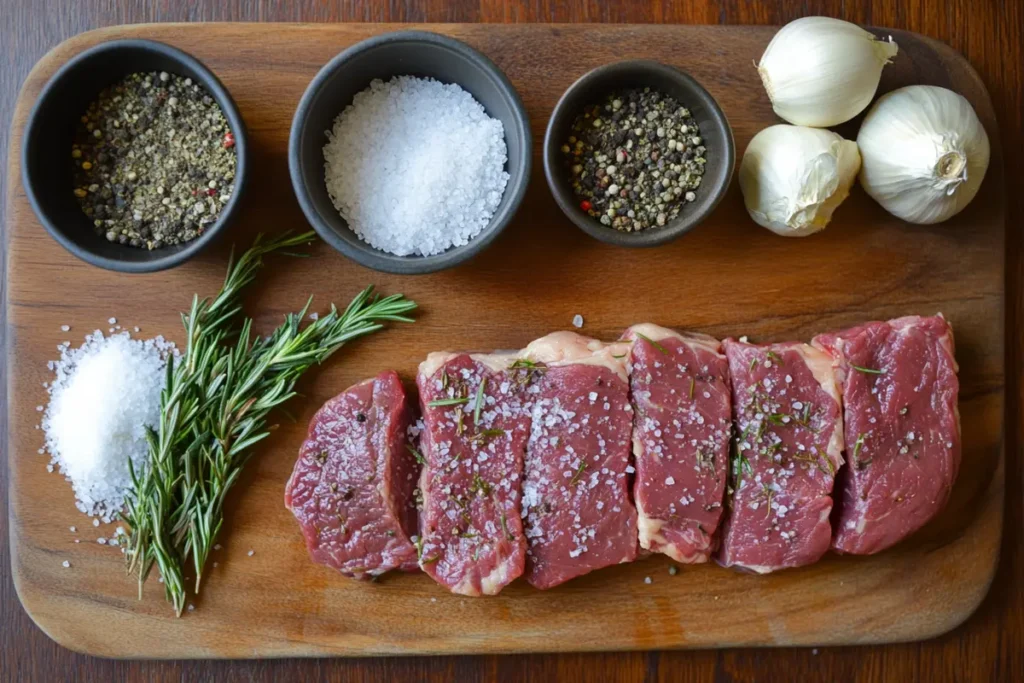
FAQ
How do you keep a ribeye roast from drying out?
To prevent a ribeye roast from drying out, ensure you sear it correctly. Also, monitor the internal temperature and avoid overcooking. Let it rest properly. Using a meat thermometer is key to a moist ribeye when following this ribeye roast recipe.
How long should a ribeye roast cook per pound?
A ribeye roast should cook for approximately 15 to 20 minutes per pound. This timeframe will vary based on your preferred doneness. However, a meat thermometer is your most reliable indicator to know when your ribeye roast recipe is complete.
What temperature should a ribeye roast be when it is done?
The final internal temperature of the roast will vary depending on your preference. For a rare roast, aim for 125-130°F (52-54°C). Medium-rare is 130-135°F (54-57°C). Medium is 135-140°F (57-60°C). This will help you complete the ribeye roast recipe.
What is the best way to season a ribeye roast?
The best way to season a ribeye roast is to be generous with salt and freshly ground black pepper. In addition, use garlic powder, onion powder, or fresh herbs like rosemary and thyme. Tailor the herbs and spices to your own preference. Seasoning is essential for a good ribeye roast recipe.
Print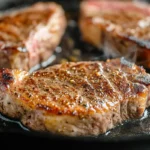
Incredible Herb-Crusted Ribeye Roast
- Total Time: PT1H55M
- Yield: 8 servings
Description
This ribeye roast recipe delivers a show-stopping centerpiece, perfect for special occasions or a memorable family dinner. The succulent, juicy roast, crusted with aromatic herbs, promises a rich and unforgettable flavor experience.
Ingredients
-
1 (3-4 pound) boneless ribeye roast
-
2 tablespoons olive oil
-
2 teaspoons kosher salt
-
1 1/2 teaspoons black pepper
-
1 tablespoon garlic powder
-
1 tablespoon dried rosemary
-
1 tablespoon dried thyme
-
1 teaspoon dried oregano
-
1/2 teaspoon smoked paprika
-
2 cloves garlic, minced (optional)
Instructions
-
Take the ribeye roast out of the refrigerator and let it sit at room temperature for 1-2 hours.
-
Preheat your oven to 325°F (160°C).
-
Pat the ribeye roast dry with paper towels.
-
In a small bowl, combine the salt, pepper, garlic powder, rosemary, thyme, oregano, and smoked paprika. If using, add the minced garlic to this mix.
-
Rub the olive oil all over the ribeye roast.
-
Evenly coat the roast with the herb and spice mixture, pressing it gently to adhere.
-
Heat a large, oven-safe skillet over medium-high heat.
-
Sear the ribeye roast on all sides until a golden-brown crust forms, about 2-3 minutes per side.
-
Transfer the seared ribeye roast to a roasting rack set inside a roasting pan.
-
Insert a meat thermometer into the thickest part of the roast, avoiding any bone if you have a bone-in roast.
-
Roast in the preheated oven for 15-20 minutes per pound, or until the meat thermometer registers your desired doneness:
-
Rare: 125-130°F (52-54°C)
-
Medium-Rare: 130-135°F (54-57°C)
-
Medium: 135-140°F (57-60°C)
-
-
Remove the roast from the oven, tent it loosely with foil, and let it rest for 10-15 minutes before carving.
-
Carve against the grain and serve immediately.
Notes
-
-
Variations: For a bolder flavor, use fresh herbs instead of dried. Add 1 teaspoon of onion powder or a pinch of red pepper flakes for additional depth. You can also use a garlic and herb paste (minced garlic, olive oil and fresh herbs mixed) instead of dried herbs.
-
Preparation Tips: Ensure the roast is completely dry before seasoning for a better sear. Don’t overcrowd the pan when searing; work in batches if needed. Always use a meat thermometer for accurate doneness.
-
Serving Suggestions: Serve with roasted potatoes, asparagus, or mashed potatoes. Beef jus, pan drippings, or a red wine gravy are excellent additions.
-
Allergies/Intolerances: This recipe is naturally gluten-free and dairy-free. Adjust seasonings according to specific dietary needs. Be cautious of cross-contamination if you have severe allergies.
-
Taste Preferences: Adjust the amount of salt, pepper, and herbs to your liking. For a more intense garlic flavor, use 3-4 cloves of garlic instead of 2.
-
- Prep Time: PT25M
- Cook Time: PT1H30M
- Category: Main Course
- Method: Oven
- Cuisine: American, Classic
Nutrition
- Serving Size: 1/8 of recipe
- Calories: 550
- Sugar: 1g
- Sodium: 700mg
- Fat: 35g
- Saturated Fat: 15g
- Unsaturated Fat: 20g
- Trans Fat: 0g
- Carbohydrates: 2g
- Fiber: 0.5g
- Protein: 55g
- Cholesterol: 170mg
Keywords: ribeye roast, prime rib, standing rib roast, beef roast, roast beef, holiday roast, oven roast, herb crusted, dinner recipe, main course

